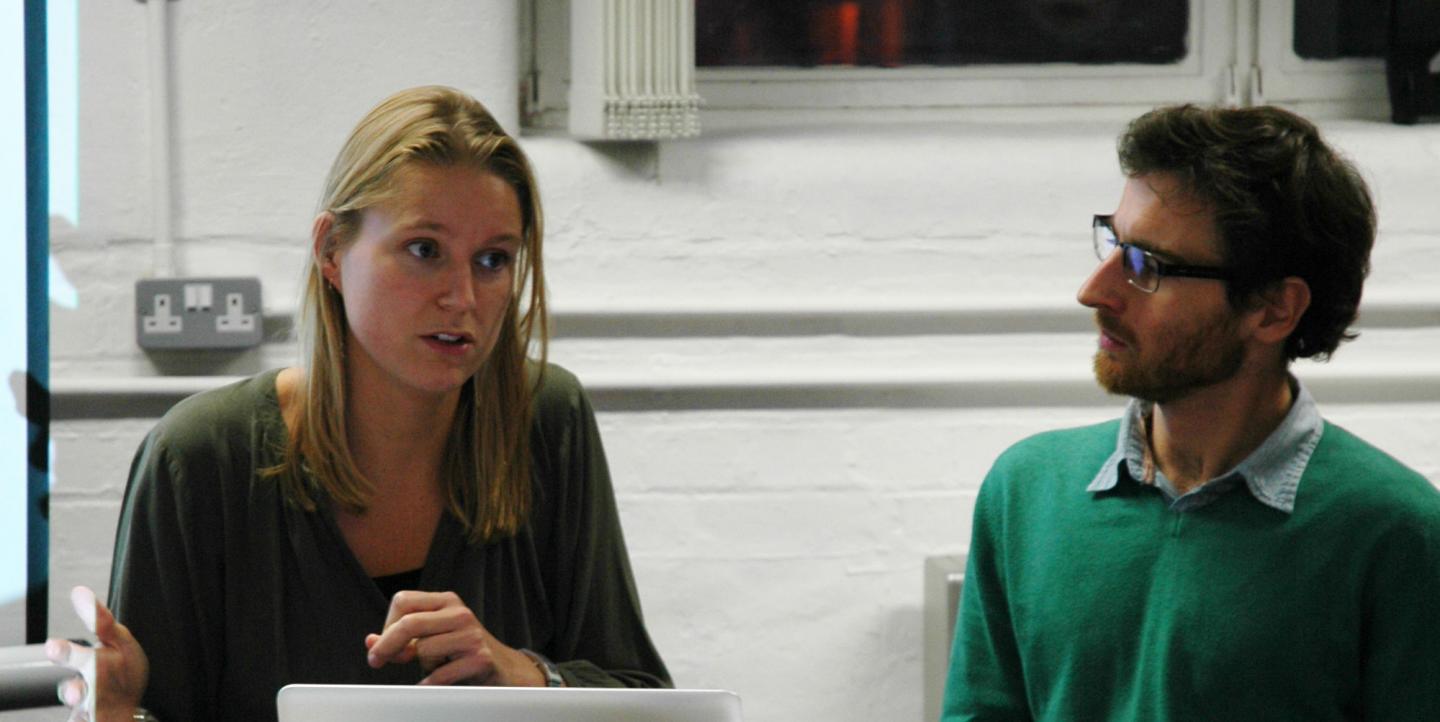Updated May 6, 2015 at 10 a.m.
When Danielle Batist gathers journalists for a workshop she often starts by turning the tables on them. She asks how they, as news consumers, feel after watching the evening news.
Usually, Batist says, they’ll answer in the same manner that any other reader would: defeated, hopeless and generally negative about all of the problems they’ve just learned of without any trace of solutions.
This is precisely why Batist is leading the charge for constructive journalism -- and training a host of newsrooms, universities and individual reporters on strategies around the practice. She wants to stop the powerlessness that often comes with traditional journalism and inspire a new way of thinking about how to explain global news events.
This desire goes back to when Batist was contributing to Positive News, a U.K.-based publication established in 1993 that tells stories not covered by mainstream media, especially around successes to pain points around the world.
“More and more, I started to get queries about the kinds of stories I was doing for them -- how do you find them, sell them and pitch them to media,” she says.
At the same time, more research was emerging about the negative toll excessive bad news is having on the public. So, Batist and media innovator Sean Dagan Wood, editor-in-chief of Positive News, created the Constructive Journalism Project. A year ago, the project added a training arm. Their organization is concentrated around London, but it’s quickly expanding. The next workshop coming up on June 12 targets freelancers, who Batist says can easily incorporate the principles of constructive journalism into their work.
What exactly is constructive journalism?
Not fluff, Batist is quick to point out. Though constructive journalism is in the same camp as positive or solutions journalism, she doesn’t see it as excessively sunny or artificially optimistic. It’s merely about telling the whole truth about an incident.
“What we’re trying to do is ultimately to strengthen all of journalism,” she says, “to give the full story.”
That means not just reporting on the grim details, the obstacles and the difficulties faced by those associated with a social issue, but also including what’s working to change that plight and who’s succeeding at combatting it. It’s an analysis about what is helping to end homelessness instead of just providing statistics on the homeless population. Or, it’s a story about a humanitarian crisis that includes how groups are picking up the pieces, not just figures on the extent of the damage.
Batist explains that reporting generally focuses on the 5 W’s -- who, what, where, when and why.
“We’re talking about adding a 6th: What now?” she says. “The story shouldn’t end with why and then leave readers feeling helpless about what to do with this information.”
Studies highlighted on the Constructive Journalism Project website demonstrate how defensive or absent of hope readers are feeling at present.
Why is it needed?
By being more constructive and complete in their reporting, news organizations can also improve their relationships with the audience, according to Batist.
Research is showing greater engagement with constructive articles. Batist also notes that comments sections become much more civil places for media outlets that are offering up solutions to problems instead of just rattling off what’s wrong.
Those who don’t understand constructive journalism think it threatens the watchdog function of journalism, to hold officials accountable and track wrongdoing.
“What I always say is, yes, that is absolutely a core function and we’re not advocating for that to not be here,” Batist says. “However why are we not investigating what’s going well in the world? We should also apply serious investigative reporting to solutions and, especially, look into solutions that are proven to be working.”
Tips to practicing constructive journalism
Constructive journalism doesn’t have to be labelled as such or called out in some special way. The article can just be a good, meaty story, and highlighting some impact can be an extra selling point for a freelancer trying to place a story.
Journalists sometimes get trapped in certain preset narratives -- like victims and perpetrators -- but Batist says if you step out of that you can see a story through a different lens. Don’t just look at what’s wrong with people, but rather who’s thriving.
There’s no denying that people involved in a trauma or big news event may have faced a hard time, but keep in mind there’s such a thing as post-traumatic growth, when someone finds strength through a traditionally negative experience. Don’t assume that they are only a victim who has been negatively affected.
Change up the questions you ask sources. When reporting from conflict zones or talking with ex-offenders, Batist says she’ll often ask how being behind bars has changed their life instead of just focusing on the worst part of the tragedy.
Use atypical sources. Rather than just interviewing policy makers, talk to people on the ground who are often the change agents and can talk about progress being achieved.
Ask yourself what would be the conventional narrative for that story and try to avoid it.
Image of Batist (left) and Wood (right) taken by Tom Lawson and used with permission

